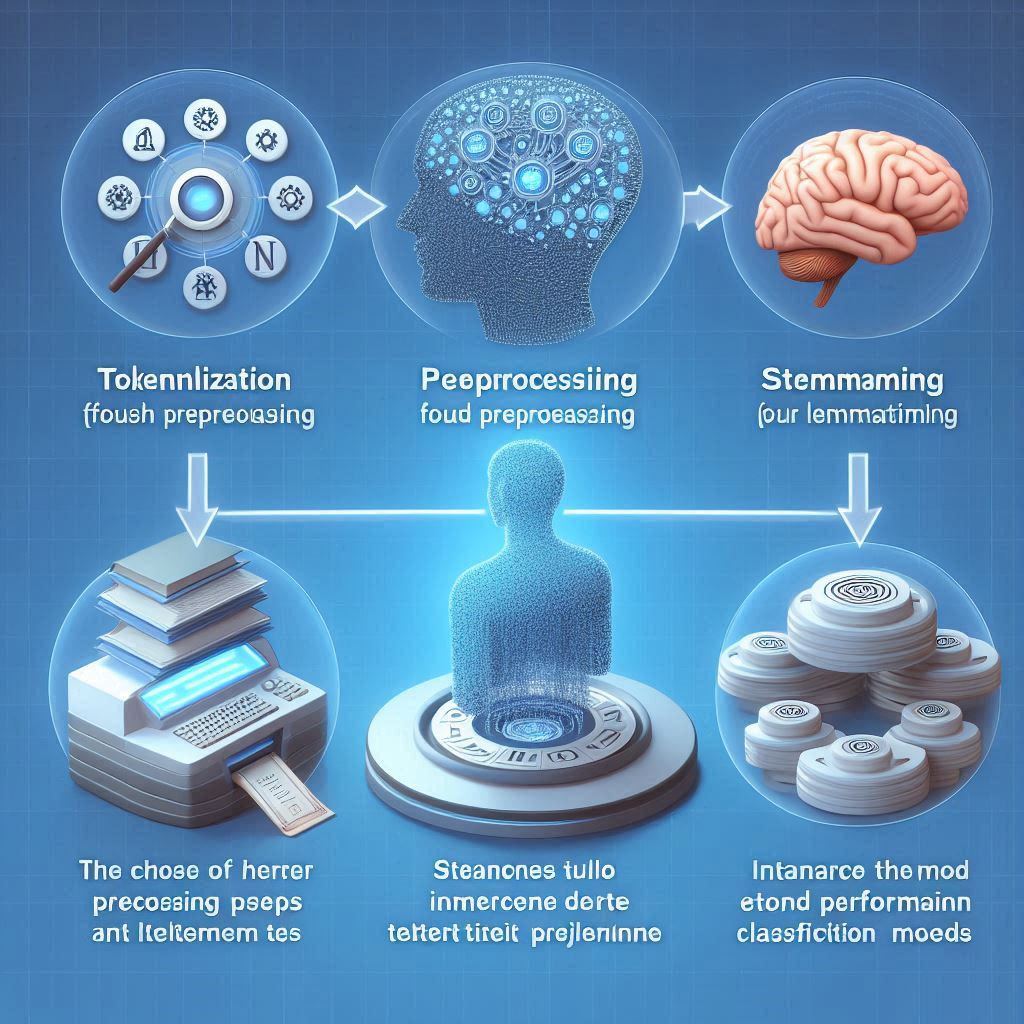What Is the Presence Penalty
The Presence Penalty is a hyperparameter in the chatGPT algorithm that determines how much new text influences the response. The penalty value ranges from -2.0 to 2.0, and higher penalty values mean that the algorithm is more likely to avoid using words that have not previously been used in the conversation.
For example, if the presence penalty is set to a high value, the chatGPT algorithm will generate responses that contain a similar vocabulary and phrasing as the conversation so far, even if the resulting response may be less diverse or creative. A lower presence penalty will likely yield more diverse and creative responses, but may also result in text that is less related to the conversation so far.
ChatGPT is a powerful natural language processing (NLP) tool that can generate human-like responses to natural language queries. It is a form of artificial intelligence (AI) that is designed to simulate human conversation. ChatGPT is used in a variety of applications, from customer service to automated chatbots. However, ChatGPT is not perfect, and one of the issues it faces is the presence penalty. This penalty is an algorithm that is used to penalize responses that are too generic or non-specific. In this article, we’ll discuss what the presence penalty is, how it affects responses, and how it impacts ChatGPT. We’ll also discuss the benefits and drawbacks of the presence penalty and explore some alternatives. Finally, we’ll look at how the presence penalty can be improved and what the future holds for ChatGPT.
What is ChatGPT?
ChatGPT is a powerful natural language processing (NLP) tool that can generate human-like responses to natural language queries. It is a form of artificial intelligence (AI) that is designed to simulate human conversation. ChatGPT is used in a variety of applications, from customer service to automated chatbots. It works by taking in a query, analyzing it, and then generating a response. The response is generated by a deep learning model that has been trained on a large corpus of data.
What is the Presence Penalty?
The presence penalty is an algorithm that is used to penalize responses that are too generic or non-specific. It is designed to reduce the number of generic responses generated by ChatGPT. The presence penalty works by assigning a score to each response based on how specific or generic it is. Responses that are too generic will be penalized and given a lower score. This helps ChatGPT generate more human-like responses that are more specific and relevant to the query.
What Does the Presence Penalty Do?
The presence penalty is designed to reduce the number of generic responses generated by ChatGPT. It does this by assigning a score to each response based on how specific or generic it is. Responses that are too generic will be penalized and given a lower score. This helps ChatGPT generate more human-like responses that are more specific and relevant to the query.
How Does the Presence Penalty Affect Responses?
The presence penalty affects responses in a few different ways. Firstly, it reduces the number of generic responses generated by ChatGPT. This helps to ensure that the responses are more relevant to the query. Secondly, it encourages ChatGPT to generate more specific and human-like responses. This helps to make conversations more natural and engaging. Finally, the presence penalty helps to ensure that ChatGPT is not generating responses that are too generic or non-specific.
How Does the Presence Penalty Affect ChatGPT?
The presence penalty affects ChatGPT in a few different ways. Firstly, it encourages ChatGPT to generate more specific and human-like responses. This helps to make conversations more natural and engaging. Secondly, it helps to ensure that ChatGPT is not generating responses that are too generic or non-specific. Finally, it helps to reduce the number of generic responses generated by ChatGPT, which helps to ensure that the responses are more relevant to the query.
How Does the Presence Penalty Affect Human-Like Responses?
The presence penalty helps to ensure that ChatGPT is generating more human-like responses. This is because the presence penalty penalizes responses that are too generic or non-specific. This encourages ChatGPT to generate more specific and human-like responses. This helps to make conversations more natural and engaging.
How Does the Presence Penalty Affect Accuracy?
The presence penalty affects accuracy in a few different ways. Firstly, it helps to reduce the number of generic responses generated by ChatGPT, which helps to ensure that the responses are more relevant to the query. Secondly, it encourages ChatGPT to generate more specific and human-like responses. This helps to make conversations more natural and engaging. Finally, it helps to ensure that ChatGPT is not generating responses that are too generic or non-specific.
What Are the Benefits of the Presence Penalty?
The presence penalty has a number of benefits. Firstly, it helps to reduce the number of generic responses generated by ChatGPT, which helps to ensure that the responses are more relevant to the query. Secondly, it encourages ChatGPT to generate more specific and human-like responses. This helps to make conversations more natural and engaging. Finally, it helps to ensure that ChatGPT is not generating responses that are too generic or non-specific.
What Are the Drawbacks of the Presence Penalty?
The presence penalty has a few drawbacks. Firstly, it can be difficult to determine the appropriate penalty for each response. Secondly, it can be difficult to determine the appropriate penalty for each query. Finally, it can be difficult to ensure that the penalty is applied consistently across all responses.
What Are the Alternatives to the Presence Penalty?
There are a few alternatives to the presence penalty. One option is to use a weighted scoring system. This involves assigning a score to each response based on how specific or generic it is. This helps to ensure that responses are more relevant to the query. Another option is to use a contextual scoring system. This involves analyzing the context of each query and assigning a score based on the context. This helps to ensure that responses are more relevant to the query.
How Can the Presence Penalty be Improved?
The presence penalty can be improved by using a weighted scoring system or a contextual scoring system. This helps to ensure that responses are more relevant to the query. Additionally, the penalty can be adjusted to ensure that it is applied consistently across all responses. Finally, the penalty can be adjusted to ensure that it is not too harsh or too lenient.
What Does the Future Hold for ChatGPT?
The future of ChatGPT looks bright. As the technology continues to improve, ChatGPT will become increasingly more powerful and capable of generating more human-like responses. Additionally, the presence penalty will continue to improve and become more effective at reducing the number of generic responses generated by ChatGPT. Finally, ChatGPT will continue to be used in a variety of applications, from customer service to automated chatbots.
How Does Presence Penalty Affect ChatGPT Responses? In Summary
The presence penalty is an algorithm that is used to penalize responses that are too generic or non-specific. It is designed to reduce the number of generic responses generated by ChatGPT and encourage more specific and human-like responses. The presence penalty affects responses in a few different ways, including reducing the number of generic responses, encouraging more human-like responses, and ensuring that ChatGPT is not generating responses that are too generic or non-specific. The presence penalty has a number of benefits, including reducing the number of generic responses, encouraging more human-like responses, and ensuring accuracy. However, it also has a few drawbacks, including difficulty in determining the appropriate penalty for each response and query. Alternatives to the presence penalty include using a weighted scoring system or a contextual scoring system. The presence penalty can be improved by adjusting the penalty to ensure that it is applied consistently across all responses and queries. The future of ChatGPT looks bright, as the technology continues to improve and the presence penalty continues to become more effective.
In summary, the presence penalty is a way to balance conversational coherence and diversity of responses. A higher presence penalty emphasizes coherence, whereas a lower presence penalty emphasizes diversity. The optimal value for the presence penalty depends on the specific use case and the desired balance between these two objectives.













One thought on “ChatGPT: What Is the Presence Penalty & How Does it Affect Responses?”